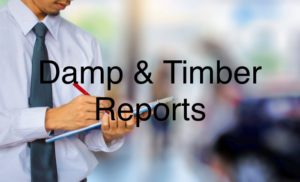Damp and Timber Surveys
Damp and Timber Surveys
Timber and damp surveys are specialist surveys carried out on a property to establish whether wood rot & damp is present, and if so what type of damp it is.
Need a Specialist Damp Report or a Timber Damp Survey? Call: 0800 246 5668 or Contact Us Here
Surveys also involve checking roof and sub floor timbers for the presence of wood-rot and any woodworm beetle infestation that could otherwise compromise the structural integrity of the building.
Damp and timber surveys may be recommended by mortgage lenders, even when a home buyers report has already been completed. This is because surveys are completed by experts with a great deal more experience within this area than a general building surveyor.
The risks associated with damp and timber decay problems can be severe enough to warrant specialist damp and timber services from a C.S.R.T qualified professional that can deliver the information and solutions required.
Damp Surveys, how are they carried out?
Damp surveys involve inspecting all accessible walls at ground floor level for rising damp, using an electric resistance meter, together with visual observations (internally and externally).
External observations will be made and relevant comments on position and type of any physical damp-proof course, building defects, rainwater goods, roof condition, external render, ground levels and air-bricks.
Sub-floor ventilation etc will be included where appropriate in damp report. Any visual evidence of damp and timber decay will also be inspected and reported on.
Adept UK Damp & Decay will provide a written damp report detailing any damp & timber defects, together with recommendations and specifications for eradicating any woodworm & wood rot.
In most cases no chemical damp-proofing is required and any ‘rising damp’ can be controlled by effecting good building practices and maintaining the external fabric of the property.
Timber Surveys
A Timber surveys involve inspecting all accessible timbers for wood boring insect attack or fungal decay (i.e. wet or dry rot ).
Roof timbers will be inspected for decay and woodworm if suitable access through a loft hatch is available.
Where required we will move items of furniture and take up sections of carpets to gain access to timber floors and will lift floorboards to inspect the sub-floor voids for signs of damp, wood-boring insects and timber decay.
All staircase timbers will be also inspected for woodworm & wood rot, but this is often limited as carpets are difficult to remove and replace, and the underside soffit is often also covered.
Any visual evidence of timber decay and infestation will be reported on. Accessible surfaces of internal joinery will be visually inspected. Internal observations will be taken, and comments on general building defects likely to affect internal timbers will be included in the report.
We will prepare a written timber report on the condition of timbers together with recommendations and specifications for any timber repairs which may be required.
Usually any decay or infestation can be controlled by cost effective environmentally friendly methods and chemical timber treatments can be avoided.
Sub-floor timber inspection
Sub-floor timber surveys carried out in properties can sometimes be found to be affected by rot/woodworm infestation once carpets/floor coverings are lifted due to reduced levels of ventilation and elevated levels of dampness.
Therefore, provision should be made for replacing any affected timber as and where necessary
If the sub-floor ventilation is not up to modern standards. Vents should be fitted at 1.5m intervals. Restricted ventilation can result in noxious gases and/or condensation that can cause woodworm and wet/dry rot to affect the floor timbers and other components of the building.
Therefore, the timber floors should be inspected by timber specialists. This will require removal of floor coverings and floorboards to allow a thorough inspection.
The ventilation should then be increased as much as possible to modern standards by a reputable building contractor. It is unlikely cross ventilation will be able to be achieved so therefore mechanical ventilation should be considered.
